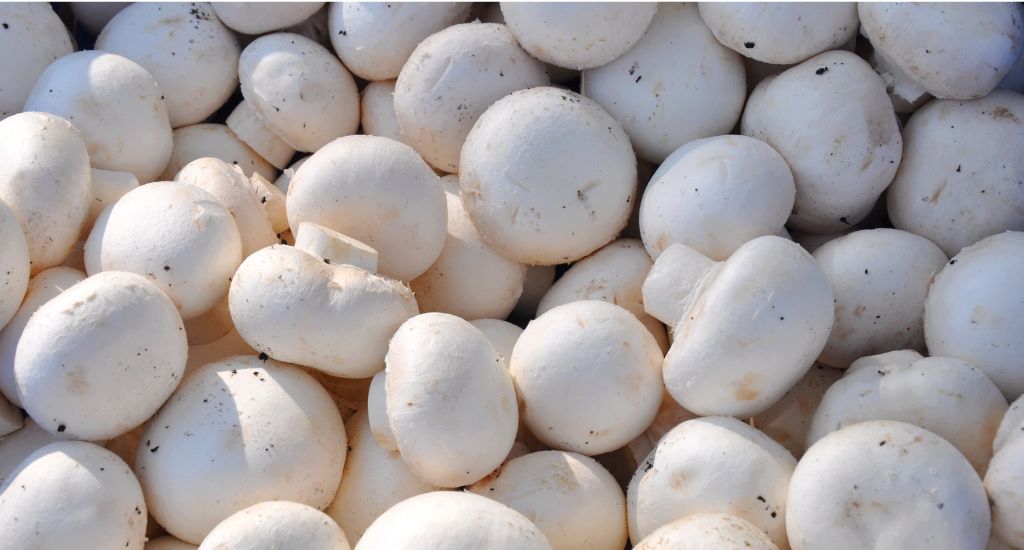
Solan mushroom farmers make it big with fungi
A mushroom revolution took place in Himachal Pradesh about 30 years ago as farmers looked for high returns from a limited space. The result is mind-blowing.

A mushroom revolution took place in Himachal Pradesh about 30 years ago as farmers looked for high returns from a limited space. The result is mind-blowing.
The hill town of Solan on the way to Shimla lends its name to a “No. 1” heady beverage, but the mountainside villages bounding the township have raised the bar in growing mushrooms.
Himachal Pradesh produces 28,000 metric tonnes of mushroom each year and Solan district alone accounts for about 10,000 of it, show latest figures released by the state’s agriculture department.
In Shamlaich village, farmer Bahadur Singh wakes up his babies at first light. They have been sleeping on plastic bags of compost, lined cheek-by-jowl in a dark, dank room. Hundreds of them reflect the little light peeking through the door left ajar, like a constellation of milky moons.
The sight creates a psychedelic effect, although the fungi he grows are for everyday cooking. Singh’s babies are cute as a button. That’s what they are: button mushrooms.

Singh, 52, gently picks the mushrooms, part of the hundreds of kilos he sells each year. A kilo of button mushroom fetches between Rs 120 and Rs 140 in the local market.
“I was 20 when I started mushroom farming,” he said, recalling the initial days when it was more trial and error than technique, which led to a poor yield.
Mushroom farming is not easy. Temperature, humidity, light, and airflow all need to be controlled to be successful. Good compost and spores are the other requirements. The ideal temperature is between 20 and 30 degrees Celsius, and the required humidity is 55 to 75 percent.
Today, his farm spread over two kanals, or one-fourth of an acre, “gives him all”. The income takes care of his household expenses, funds his three children’s education, and he saved enough to buy land and build a two-storey house. He has savings for exigencies and old age.
Various factors have contributed to the mushrooming business in Solan. First, the topography. Land for farming is scarce in the Himalayas, but mushrooms can be grown in a spare room and harvested year-round. Grown in a controlled environment, there’s no danger of crop loss from excessive rain, hailstorms, sunshine, or cold.

The lack of space for traditional crops prompted the government to encourage mushroom farming in a big way—incentivising the farmers with subsidies, training, kits, spawns, and spores. Solan now has hundreds of registered mushroom farmers.
The place is ideal for mushrooms because of its humidity, temperature, and carbon dioxide level that spurs optimum growth, said Dr. Shwet Kamal, principal scientist at the Directorate of Mushroom Research in Solan.
Most farmers get their spawn from Kamal’s office, but big-time farmers like Vikas grow their own in private labs.
Vikas was looking for a niche after his post-graduation in commerce in 1990 when he decided to go into mushroom farming “to do my own business”. He comes from a farming family and was somewhat surprised at how well things went during his first year.

“For an investment of Rs 5,000, I sold my first mushroom crop from a small, dark room for Rs 12,000. Business mushroomed for me.” He is among the mushroom pioneers in Solan.
He has branched out to Mohali as well and his farms produce about two tonnes of mushroom every day. More than 300 workers are in his company’s rolls.
The government is focusing on taking initiatives to assist small-scale farmers to let them take advantage of the growing commercial mushroom consumption in cities, restaurants, hotels, and cafeterias that is propelling the market demand.
Dr Rajesh Kaushik, deputy director of agriculture in Solan, said his department trains farmers to upgrade their skills, helps them market their produce, and also shows them how to pack mushrooms in small boxes or transparent trays for sale. It teaches how to dry mushrooms in dehydrators or can them in food processing units.
Farmer Champak Singh couldn’t thank his farm enough for pulling him out of debt. “I started out in a few rooms of my old mud house. Things changed fast. I get good returns now and am able to save too.”

Rising consumer awareness regarding the health benefits offered by mushrooms, and improvements in packaging technologies are some of the key factors influencing the market growth.
Grown organically, mushrooms are nutritious—high in vitamin D, they also are a source of more than a dozen other vitamins and minerals, including folic acid. Mushrooms as a meat substitute too.
Mushroom farming converts agricultural waste into healthy food, said Vikas. “We make compost from hay and wheat straw and it gives everything the plant needs.”
Solan’s proximity to the plains, especially big cities like Chandigarh, makes shipping the mushrooms easier and cost-effective. Chandigarh-based trader Rohit Singh said Solan’s mushrooms are in high demand across the country.
Fungi have a short shelf-life, but cold trucks made it possible to take the crop to places as far as Delhi, and even Mumbai and Bangalore.
The lead image at the top shows button mushrooms ready to get packed (Photo from Canva)
Nasir Yousufi is a journalist based at Srinagar.